Review of the year: How Switzerland made international headlines in 2017
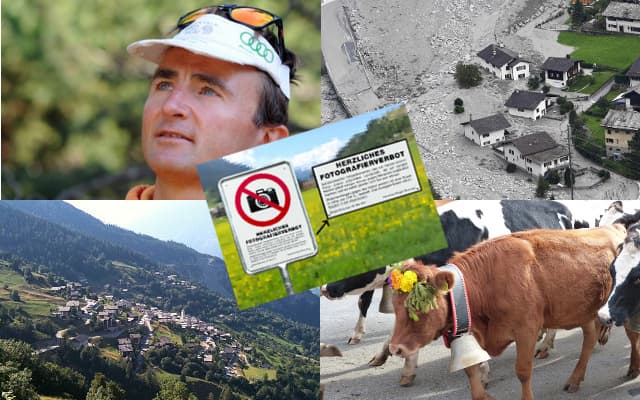
Another year is nearly over, and it’s been an eventful one in Switzerland. Arguments over cowbells, record-breaking engineering projects and one small village’s repopulation plan were among the many stories that made international headlines this year.
Here’s The Local’s review of the biggest stories in 2017.
January
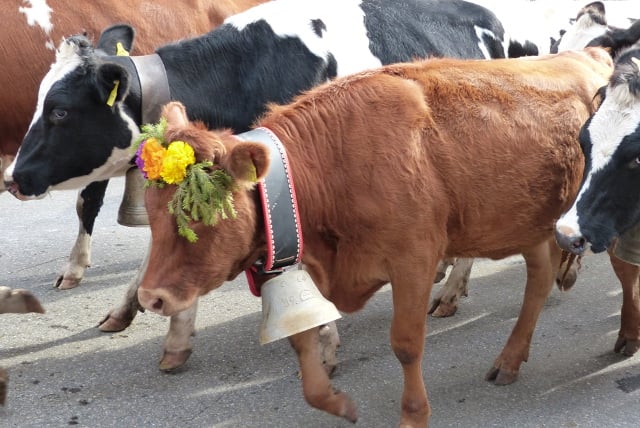 Photo: The Local
The year kicked off in typical Swiss style with a row over citizenship... and cowbells. When Dutchwoman and long-term Swiss resident Nancy Holten had her Swiss citizenship request refused for a second time, it wasn’t because she couldn’t speak the local language or wasn’t well integrated, it was because the dedicated animal rights campaigner had spoken out in the press against cowbells and other Swiss traditions. That didn’t go down too well with residents in her village, who twice blocked her citizenship request.
Thankfully for Holten, she won her appeal to the cantonal authorities, who prevented the villagers from turning her down a third time, and she was finally granted Swiss citizenship at the end of April.
February
Photo: The Local
The year kicked off in typical Swiss style with a row over citizenship... and cowbells. When Dutchwoman and long-term Swiss resident Nancy Holten had her Swiss citizenship request refused for a second time, it wasn’t because she couldn’t speak the local language or wasn’t well integrated, it was because the dedicated animal rights campaigner had spoken out in the press against cowbells and other Swiss traditions. That didn’t go down too well with residents in her village, who twice blocked her citizenship request.
Thankfully for Holten, she won her appeal to the cantonal authorities, who prevented the villagers from turning her down a third time, and she was finally granted Swiss citizenship at the end of April.
February
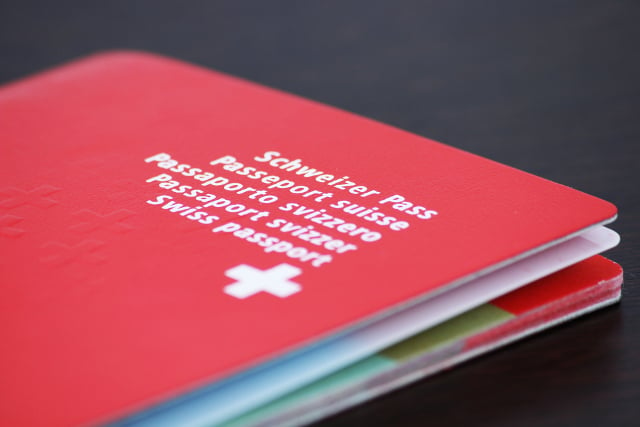 Photo: arnaldo.fr/Depositphotos
Speaking of citizenship, in a February referendum the Swiss people finally voted to make it slightly easier for third generation immigrants (those born in Switzerland with immigrant grandparents) to become Swiss. Only slightly easier, mind. Still, the 60 percent yes vote was a decisive rejection of the anti-Muslim ‘No’ campaign, whose posters showed a woman in a niqab and a tagline urging voters to vote against “uncontrolled citizenship”.
April
Photo: arnaldo.fr/Depositphotos
Speaking of citizenship, in a February referendum the Swiss people finally voted to make it slightly easier for third generation immigrants (those born in Switzerland with immigrant grandparents) to become Swiss. Only slightly easier, mind. Still, the 60 percent yes vote was a decisive rejection of the anti-Muslim ‘No’ campaign, whose posters showed a woman in a niqab and a tagline urging voters to vote against “uncontrolled citizenship”.
April
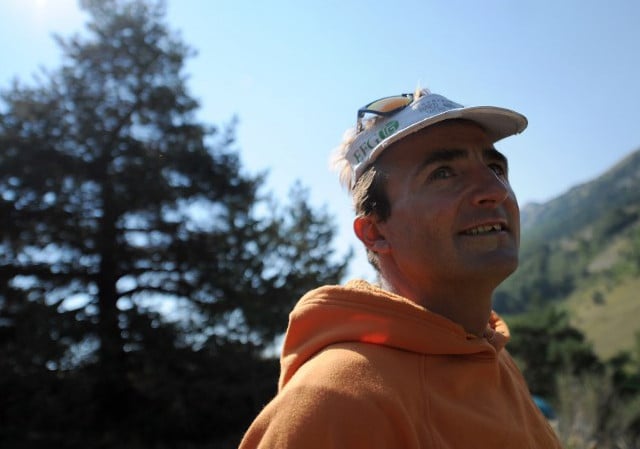 Photo: Jean-Pierre Clatot/AFP
The climbing world – and admirers around the globe – were thrown into mourning at the end of April when Swiss mountaineer Ueli Steck died whilst acclimatizing for an ascent of Everest by a new route. The 40-year-old, known as the ‘Swiss Machine’ had set many records, including being the first to climb Annapurna solo and setting three speed records on the Eiger in Switzerland.
Steck was cremated in Nepal but a memorial service was later held in Interlaken, near his home village.
May
Photo: Jean-Pierre Clatot/AFP
The climbing world – and admirers around the globe – were thrown into mourning at the end of April when Swiss mountaineer Ueli Steck died whilst acclimatizing for an ascent of Everest by a new route. The 40-year-old, known as the ‘Swiss Machine’ had set many records, including being the first to climb Annapurna solo and setting three speed records on the Eiger in Switzerland.
Steck was cremated in Nepal but a memorial service was later held in Interlaken, near his home village.
May
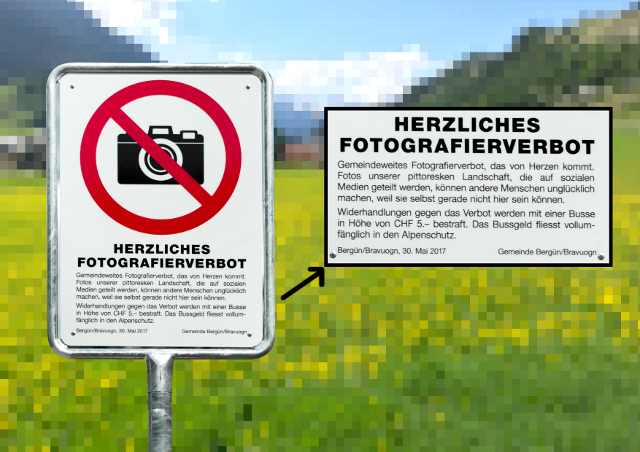 Photo: Bergün/Bravuogn Tourism
It was a publicity stunt of sorts, but the commune of Bergün/Bravuogn near St Moritz did actually bring in a new law banning tourists from taking photos. Why? Because the authorities decided the village was so beautiful that photos posted on social media sites would spark jealousy in people who weren't there.
The new law sparked a media storm around the world, and not everyone found it funny, with some criticizing the village and others predicting a backlash – indeed, a group of German tourists reportedly cancelled their visit to Bergün due to the ban.
A couple of days later the commune did a u-turn and quashed the rule, with the mayor saying they never thought it would have generated so much interest.
July
Photo: Bergün/Bravuogn Tourism
It was a publicity stunt of sorts, but the commune of Bergün/Bravuogn near St Moritz did actually bring in a new law banning tourists from taking photos. Why? Because the authorities decided the village was so beautiful that photos posted on social media sites would spark jealousy in people who weren't there.
The new law sparked a media storm around the world, and not everyone found it funny, with some criticizing the village and others predicting a backlash – indeed, a group of German tourists reportedly cancelled their visit to Bergün due to the ban.
A couple of days later the commune did a u-turn and quashed the rule, with the mayor saying they never thought it would have generated so much interest.
July
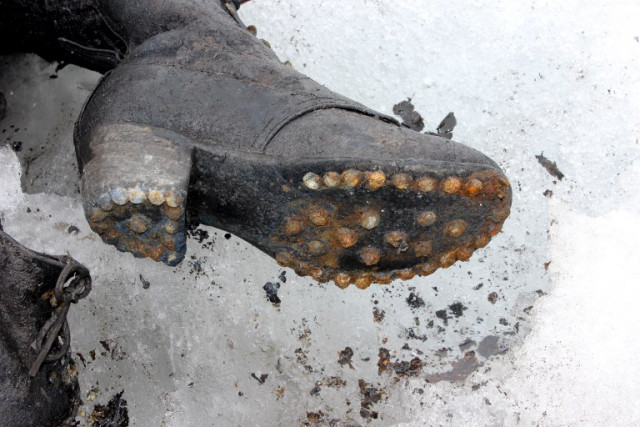 Photo: Valais police
A mild winter and a hot summer had significant consequences for Swiss glaciers over the summer, with scientists later saying glaciers lost a whopping three percent of their volume over the year. And the shifting ice revealed some poignant stories. In the middle of July an employee of the Glacier 3,000 resort found the remains of a couple who went missing 75 years earlier on the Tsanfleuron glacier. Marcelin and Francine Dumoulin from Saviese disappeared in 1942 whilst hiking to the alpine pasture where they kept their cattle. In August this year their two surviving daughters were finally able to bury their parents.
Just a few days later the body of a 36-year-old German skier who went missing in 1963 was uncovered on the Morteratsch glacier.
August
Photo: Valais police
A mild winter and a hot summer had significant consequences for Swiss glaciers over the summer, with scientists later saying glaciers lost a whopping three percent of their volume over the year. And the shifting ice revealed some poignant stories. In the middle of July an employee of the Glacier 3,000 resort found the remains of a couple who went missing 75 years earlier on the Tsanfleuron glacier. Marcelin and Francine Dumoulin from Saviese disappeared in 1942 whilst hiking to the alpine pasture where they kept their cattle. In August this year their two surviving daughters were finally able to bury their parents.
Just a few days later the body of a 36-year-old German skier who went missing in 1963 was uncovered on the Morteratsch glacier.
August
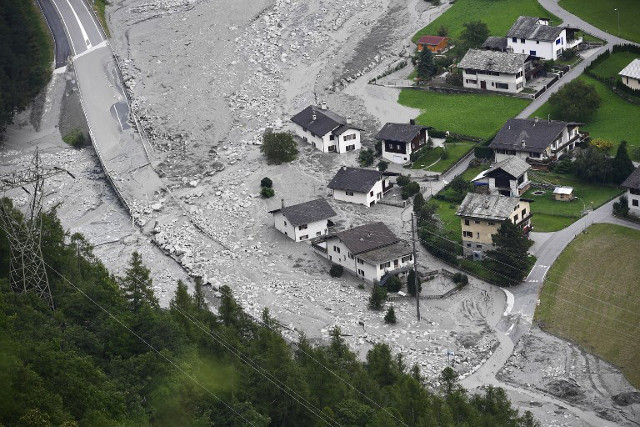 Photo: Miguel Medina/AFP
Switzerland was once again in the world news for a sad reason in August, as a massive landslide hit the village of Bondo in the canton of Graubünden, destroying parts of the village and leaving eight hikers missing, presumed dead. A second landslide hit a few days later, and the area remained a no-go zone for some time as work began to clear the rubble and secure the region.
The Swiss public stepped up to give millions to help those affected, and some villagers were finally allowed to return home in October.
September
Photo: Miguel Medina/AFP
Switzerland was once again in the world news for a sad reason in August, as a massive landslide hit the village of Bondo in the canton of Graubünden, destroying parts of the village and leaving eight hikers missing, presumed dead. A second landslide hit a few days later, and the area remained a no-go zone for some time as work began to clear the rubble and secure the region.
The Swiss public stepped up to give millions to help those affected, and some villagers were finally allowed to return home in October.
September
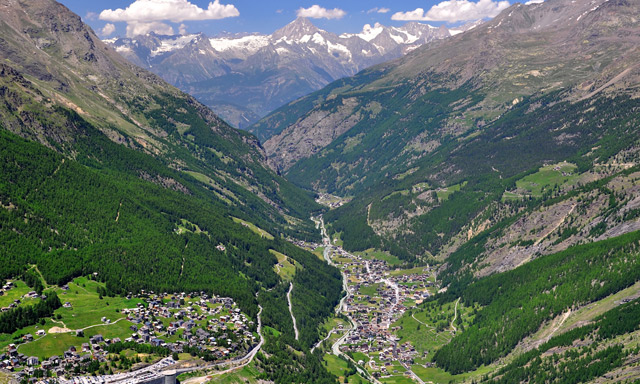 Photo: vencav/Depositphotos
Following the events in Bondo, another landslide made headlines in September when the tongue of the Trift glacier collapsed. Thankfully, scientists had been monitoring the glacier and predicted the disaster, allowing the area to be safely evacuated in advance, and no one in the nearby village of Saas-Fee was hurt.
November
Photo: vencav/Depositphotos
Following the events in Bondo, another landslide made headlines in September when the tongue of the Trift glacier collapsed. Thankfully, scientists had been monitoring the glacier and predicted the disaster, allowing the area to be safely evacuated in advance, and no one in the nearby village of Saas-Fee was hurt.
November
 Photo: Xenos/Wikimedia Commons
It wasn’t expecting to make headlines around the world, but that’s what happened to the sleepy Valais village of Albinen when it announced its new repopulation plan. Wanting to attract young families to the village and boost its population, the commune devised a scheme to give 25,000 francs per adult and 10,000 per child to families willing to go and live there – under certain conditions.
Such a fantastic offer piqued the interest of The Local readers around the world, and the story was picked up by international media. Albinen later complained that many papers hadn’t accurately stated all the conditions and as a result, it had been inundated with enquiries.
The deal was later approved in a residents’ vote, meaning a lucky few who meet those strict conditions may be calling Albinen home some time soon...
December
Photo: Xenos/Wikimedia Commons
It wasn’t expecting to make headlines around the world, but that’s what happened to the sleepy Valais village of Albinen when it announced its new repopulation plan. Wanting to attract young families to the village and boost its population, the commune devised a scheme to give 25,000 francs per adult and 10,000 per child to families willing to go and live there – under certain conditions.
Such a fantastic offer piqued the interest of The Local readers around the world, and the story was picked up by international media. Albinen later complained that many papers hadn’t accurately stated all the conditions and as a result, it had been inundated with enquiries.
The deal was later approved in a residents’ vote, meaning a lucky few who meet those strict conditions may be calling Albinen home some time soon...
December
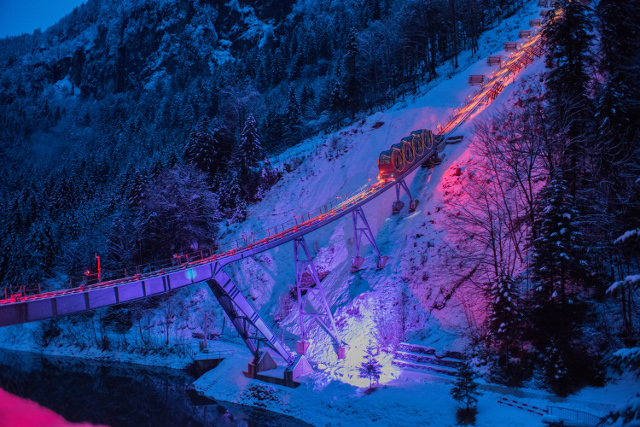 Photo: Stoos Tourism
We’d already seen Zermatt in the Valais make international news back in July when it opened the world’s longest suspension bridge, then this month it was the turn of Stoos in the canton of Schwyz to impress the world with its engineering skills by opening the world’s steepest suspension bridge. The space-age style train ascends a slope with a 110 percent gradient but still manages to keep its passengers upright.
Photo: Stoos Tourism
We’d already seen Zermatt in the Valais make international news back in July when it opened the world’s longest suspension bridge, then this month it was the turn of Stoos in the canton of Schwyz to impress the world with its engineering skills by opening the world’s steepest suspension bridge. The space-age style train ascends a slope with a 110 percent gradient but still manages to keep its passengers upright.
Comments
See Also
Here’s The Local’s review of the biggest stories in 2017.
January

Photo: The Local
The year kicked off in typical Swiss style with a row over citizenship... and cowbells. When Dutchwoman and long-term Swiss resident Nancy Holten had her Swiss citizenship request refused for a second time, it wasn’t because she couldn’t speak the local language or wasn’t well integrated, it was because the dedicated animal rights campaigner had spoken out in the press against cowbells and other Swiss traditions. That didn’t go down too well with residents in her village, who twice blocked her citizenship request.
Thankfully for Holten, she won her appeal to the cantonal authorities, who prevented the villagers from turning her down a third time, and she was finally granted Swiss citizenship at the end of April.
February

Photo: arnaldo.fr/Depositphotos
Speaking of citizenship, in a February referendum the Swiss people finally voted to make it slightly easier for third generation immigrants (those born in Switzerland with immigrant grandparents) to become Swiss. Only slightly easier, mind. Still, the 60 percent yes vote was a decisive rejection of the anti-Muslim ‘No’ campaign, whose posters showed a woman in a niqab and a tagline urging voters to vote against “uncontrolled citizenship”.
April

Photo: Jean-Pierre Clatot/AFP
The climbing world – and admirers around the globe – were thrown into mourning at the end of April when Swiss mountaineer Ueli Steck died whilst acclimatizing for an ascent of Everest by a new route. The 40-year-old, known as the ‘Swiss Machine’ had set many records, including being the first to climb Annapurna solo and setting three speed records on the Eiger in Switzerland.
Steck was cremated in Nepal but a memorial service was later held in Interlaken, near his home village.
May

Photo: Bergün/Bravuogn Tourism
It was a publicity stunt of sorts, but the commune of Bergün/Bravuogn near St Moritz did actually bring in a new law banning tourists from taking photos. Why? Because the authorities decided the village was so beautiful that photos posted on social media sites would spark jealousy in people who weren't there.
The new law sparked a media storm around the world, and not everyone found it funny, with some criticizing the village and others predicting a backlash – indeed, a group of German tourists reportedly cancelled their visit to Bergün due to the ban.
A couple of days later the commune did a u-turn and quashed the rule, with the mayor saying they never thought it would have generated so much interest.
July

Photo: Valais police
A mild winter and a hot summer had significant consequences for Swiss glaciers over the summer, with scientists later saying glaciers lost a whopping three percent of their volume over the year. And the shifting ice revealed some poignant stories. In the middle of July an employee of the Glacier 3,000 resort found the remains of a couple who went missing 75 years earlier on the Tsanfleuron glacier. Marcelin and Francine Dumoulin from Saviese disappeared in 1942 whilst hiking to the alpine pasture where they kept their cattle. In August this year their two surviving daughters were finally able to bury their parents.
Just a few days later the body of a 36-year-old German skier who went missing in 1963 was uncovered on the Morteratsch glacier.
August

Photo: Miguel Medina/AFP
Switzerland was once again in the world news for a sad reason in August, as a massive landslide hit the village of Bondo in the canton of Graubünden, destroying parts of the village and leaving eight hikers missing, presumed dead. A second landslide hit a few days later, and the area remained a no-go zone for some time as work began to clear the rubble and secure the region.
The Swiss public stepped up to give millions to help those affected, and some villagers were finally allowed to return home in October.
September

Photo: vencav/Depositphotos
Following the events in Bondo, another landslide made headlines in September when the tongue of the Trift glacier collapsed. Thankfully, scientists had been monitoring the glacier and predicted the disaster, allowing the area to be safely evacuated in advance, and no one in the nearby village of Saas-Fee was hurt.
November

Photo: Xenos/Wikimedia Commons
It wasn’t expecting to make headlines around the world, but that’s what happened to the sleepy Valais village of Albinen when it announced its new repopulation plan. Wanting to attract young families to the village and boost its population, the commune devised a scheme to give 25,000 francs per adult and 10,000 per child to families willing to go and live there – under certain conditions.
Such a fantastic offer piqued the interest of The Local readers around the world, and the story was picked up by international media. Albinen later complained that many papers hadn’t accurately stated all the conditions and as a result, it had been inundated with enquiries.
The deal was later approved in a residents’ vote, meaning a lucky few who meet those strict conditions may be calling Albinen home some time soon...
December

Photo: Stoos Tourism
We’d already seen Zermatt in the Valais make international news back in July when it opened the world’s longest suspension bridge, then this month it was the turn of Stoos in the canton of Schwyz to impress the world with its engineering skills by opening the world’s steepest suspension bridge. The space-age style train ascends a slope with a 110 percent gradient but still manages to keep its passengers upright.
Join the conversation in our comments section below. Share your own views and experience and if you have a question or suggestion for our journalists then email us at [email protected].
Please keep comments civil, constructive and on topic – and make sure to read our terms of use before getting involved.
Please log in here to leave a comment.